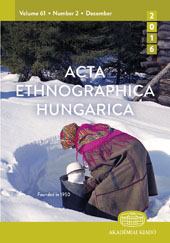Zentrale und lokale Regelung - Praxis des Volkes in der Waldnutzung in Ungarn
Central and local regulation – folk practice in forest utilisation in Hungary
Author(s): Tivadar PetercsákSubject(s): Energy and Environmental Studies, Human Ecology, Environmental interactions
Published by: Akadémiai Kiadó
Keywords: forest utilisation by serfs and cotters; forest protection regulations; guarding the forests; permit to collect firewood; common ownership; forest ownership; forest law;
Summary/Abstract: The population of the villages and market towns in the hilly areas of Hungary have countless ties to the forest. However, forest utilisation was restricted by regulations imposed by the state and the large estateowners. From the mid-18th century the extent to which serfs and cotters could use the forest and the services they were required to provide were regulated uniformly at the national level. Village people regularly violated the central rules and measures of the estate-owners for protection of the forest, in order to provide themselves with firewood, graze animals and sell timber. The peasant forest communities formed after the liberation of the serfs in 1848 were established on the basis of national laws, but local traditions and local economic interests also influenced their operation. The forest communities themselves regulated the management of the common forest assets and the share of the profits. Their functioning was characterized by internal autonomy and continuous collective control.
Journal: Acta Ethnographica Hungarica
- Issue Year: 51/2006
- Issue No: 1-2
- Page Range: 75-90
- Page Count: 16
- Language: German
- Content File-PDF

